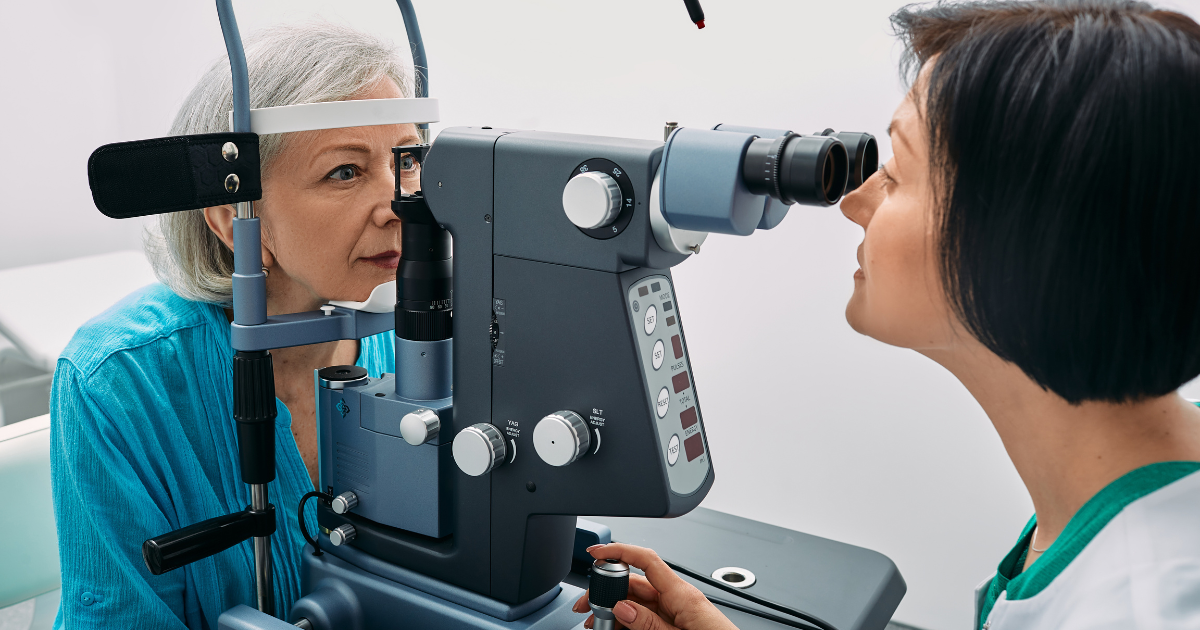Intraocular Implants vs. Cataracts: What is the Difference?
May 15, 2025
If you have been hearing terms like cataracts, ocular implants, or intraocular lens implants and wondering how they all fit together, you are not alone. These words often come up during conversations about vision changes, especially as we age.
The truth is that cataracts and intraocular implants are closely connected. Let us look at this more closely.
Cataracts: The Condition That Clouds Vision

Cataracts are a common eye condition that causes the eye's natural lens to become cloudy over time. This cloudiness can make your vision blurry, dim, or dull – almost like looking through a foggy window.
So, what is actually happening inside your eye? The natural lens, which sits just behind your iris (the colored part of your eye), is usually clear and helps focus light onto your retina so you can see sharp images.
But with cataracts, proteins in the lens start to break down and clump together. This buildup makes it harder for light to pass through clearly.
As the lens gets cloudier, glasses or contacts stop being enough to fix your vision. That is why cataract surgery becomes necessary. Think of it like replacing a foggy window pane. You cannot just wipe away the blur. You need to remove the old glass and put in a new, clear one. Cataract surgery works the same way.
Intraocular Implants: Helping You See Clearly Again
During cataract surgery, the cloudy lens is removed and replaced with a clear, artificial one called an intraocular lens implant (IOL). An IOL is a clear, flexible lens that takes the place of your eye’s natural lens after it is removed.
The IOL sits in the same spot as the original lens and helps focus light correctly onto the retina, allowing you to see more clearly.
Different types of IOLs are available, depending on your lifestyle and vision needs. Some help you see well at all distances, while others focus on either near or far vision. Your eye doctor will help you choose the right option based on your eyes and daily routine.
When Might You Need an Intraocular Implant?
You might need an intraocular implant when cataracts start to seriously affect your vision.
If things look blurry, dim, or washed out, and glasses no longer help, your ophthalmologist may recommend cataract surgery to remove the cloudy natural lens and replace it with a clear one.
The decision is not just about how your eyes look under a microscope. It is about how your vision is affecting your daily life. If you struggle to read, drive, or enjoy everyday activities because of cloudy vision, it may be time to consider lens replacement.
That is where the IOL comes in. Read Intraocular Cataract Lens Surgery: A Guide to Clearer Vision for more about IOLs.
How long do intraocular implants last?
Intraocular lens implants are designed to last a lifetime. Once placed during cataract surgery, they do not wear out or need to be replaced.
They are made from durable materials that stay stable inside the eye, so most people never need to worry about them again.
What is the difference between ocular implants and intraocular implants?
Although the terms are often used interchangeably, an intraocular implant is more specific. It refers to an implant placed inside the eye.
An ocular implant could mean anything implanted in or around the eye, including IOLs, orbital implants, or other devices.
If you are talking about cataract surgery, you are almost always referring to an intraocular lens implant.
What is the difference between an ocular implant and an orbital implant?
An ocular implant usually refers to an intraocular lens (IOL) – a clear artificial lens placed inside the eye after cataract surgery to restore vision.
An orbital implant, on the other hand, is something completely different. It is used when an eye has been surgically removed, and a device is placed in the eye socket to maintain the shape of the area. It does not restore vision.
So, while both are called “implants,” one helps you see, and the other helps maintain appearance and structure.
Trust the Experts in Vision Restoration

At Heart of Texas Eye Care, we take the time to understand your vision needs and help you choose the right ocular implant for your lifestyle. Our team uses advanced tools and personalized care to make the process safe, comfortable, and effective.
If you notice changes in your vision or have questions about cataract surgery and intraocular lens implants, we are here to help.
Schedule a consultation or call us at (512) 213-2220 to talk with one of our specialists and learn what options are right for you.
We serve patients in Dripping Springs, Austin, Kyle, Bee Cave, Marble Falls, and other surrounding areas.


